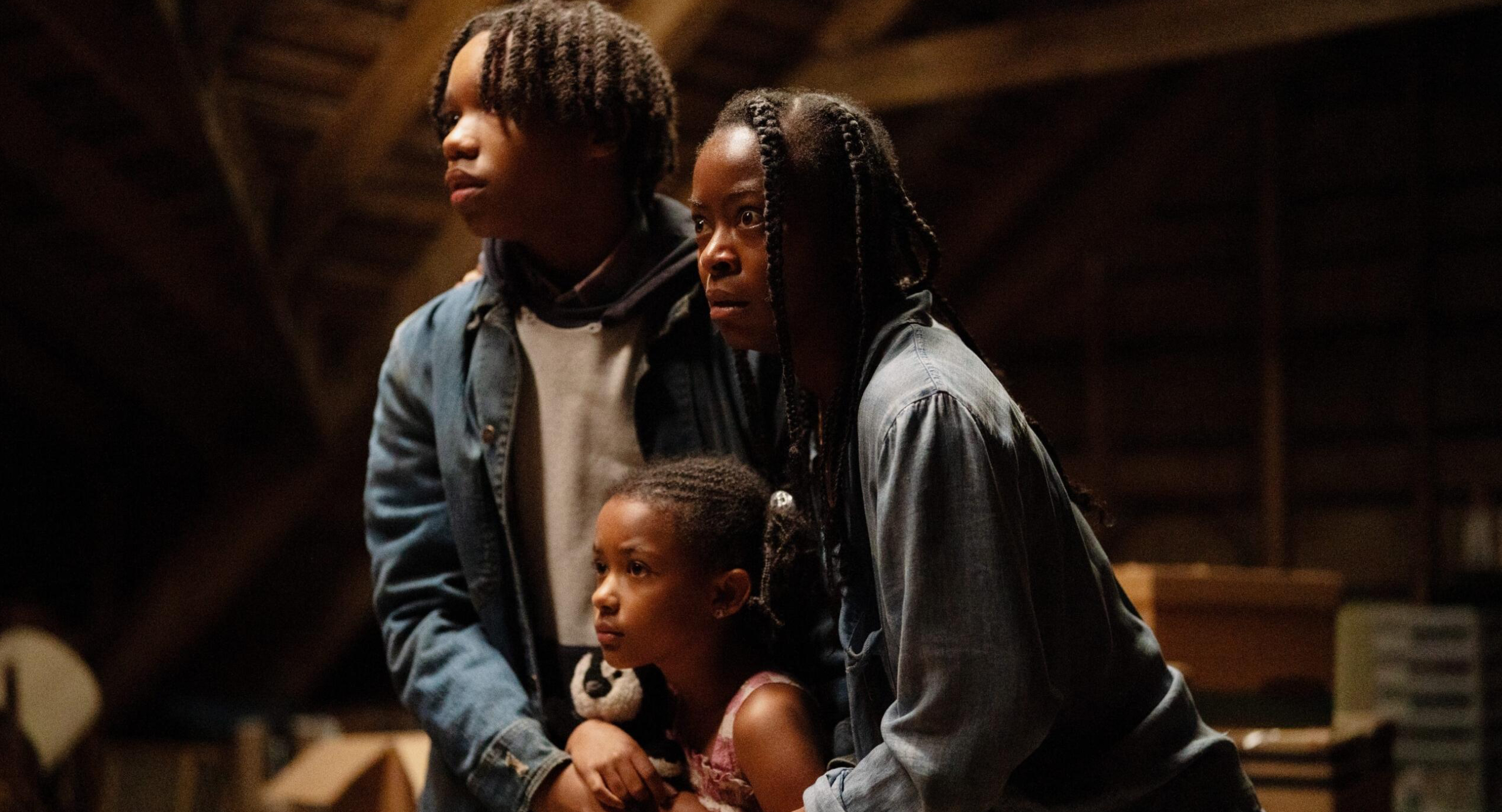The Woman in the Yard – Film Review
Published March 31, 2025

Jaume Collet-Serra, known for his work in the thriller and horror genres, returns with The Woman in the Yard, a psychological horror film that explores grief, guilt, and self-destruction through an eerie supernatural lens. With a screenplay by Sam Stefanak in his feature debut, the film is anchored by a commanding performance from Danielle Deadwyler and striking cinematography from Pawel Pogorzelski. Though the film builds genuine tension and delivers some chilling moments, it ultimately struggles with predictability and an overreliance on familiar horror tropes, including an abundance of frustrating jump scares.
At its core, The Woman in the Yard is more than just a supernatural horror story—it is a deeply psychological exploration of depression and unresolved grief. The film follows Ramona (Danielle Deadwyler), a widowed mother who has been left physically and emotionally scarred after a tragic car accident that took her husband’s life. Her relationship with her two children, Taylor (Peyton Jackson) and Annie (Estella Kahiha), is strained due to her strict and emotionally distant nature.
Their already fractured family dynamic takes a sinister turn when a mysterious woman dressed in black (Okwui Okpokwasili) appears in their front yard, ominously declaring, “Today’s the day.” This entity, known only as The Woman, exudes an unsettling presence, using what appears to be shadowy supernatural forces to target the family—including their beloved dog, Charlie. As the haunting escalates, it becomes clear that The Woman is not merely an external threat but is tied to Ramona’s own hidden demons.
Collet-Serra masterfully builds an atmosphere of dread through slow-burning tension, particularly in the film’s first half. Rather than relying solely on overt horror elements, The Woman in the Yard thrives in moments of psychological unease. The creeping presence of The Woman—who never rushes, never speaks more than necessary, but simply watches—adds to the film’s unnerving tone. Her presence is a manifestation of Ramona’s inner turmoil, a representation of guilt and self-loathing that has festered since her husband’s death.
Danielle Deadwyler delivers an emotionally charged performance, embodying the complexity of a woman weighed down by guilt and grief. Ramona is not an easy character to sympathize with—her coldness toward her children, her strict demeanor, and the secrets she harbors make her feel distant. Yet, Deadwyler imbues her with such raw vulnerability that even in her lowest moments, she remains compelling. Her performance in the film’s climactic scenes—where Ramona is forced to confront her true emotions—is particularly powerful, ensuring that even as the film leans into genre conventions, its emotional core remains strong.
Okwui Okpokwasili is equally effective in her role as The Woman. Without the need for elaborate monologues or excessive theatrics, her mere presence conveys an ominous authority. Every glance, every slow movement feels carefully calculated to instill fear. She doesn’t need to scream or snarl; her quiet menace is enough.
The supporting cast also delivers solid performances. Peyton Jackson and Estella Kahiha convincingly portray children who are both fearful and frustrated by their mother’s behavior, adding depth to the family dynamic. Russell Hornsby, in a smaller but crucial role as Ramona’s late husband David, provides a haunting presence that lingers over the narrative.
Cinematographer Pawel Pogorzelski (Hereditary, Midsommar) elevates The Woman in the Yard beyond standard horror fare with striking visuals that emphasize isolation and psychological torment. His use of lighting—particularly the interplay of shadows—enhances the film’s eerie atmosphere. Scenes set at dusk and nighttime are bathed in cold, desaturated tones, mirroring Ramona’s emotional numbness. Conversely, moments of warmth are fleeting, further reinforcing the idea that comfort and safety are slipping away.
Pogorzelski also employs mirror imagery and distorted reflections to subtly hint at the film’s central theme—the duality of self. The way Ramona is often framed in partial reflections or obscured behind objects foreshadows the deeper revelation of The Woman’s true nature. It’s a visual language that rewards attentive viewers, making the horror feel more cerebral than just visceral.
Despite its strong performances and atmospheric cinematography, The Woman in the Yard struggles with an issue that plagues many psychological horror films: a sense of familiarity. The film borrows heavily from other genre works that explore grief through supernatural metaphors, such as The Babadook and Relic. While this thematic approach is effective, it makes the story feel somewhat predictable. Savvy horror fans will likely deduce the film’s major twist well before it is revealed, lessening the impact of what should be a harrowing revelation.
Additionally, the film leans too heavily on conventional horror techniques—particularly jump scares. While a few are well-executed, the sheer number of them becomes distracting. Some of the most chilling moments in The Woman in the Yard come from slow, deliberate tension-building, but these moments are often interrupted by loud, sudden shocks that feel unnecessary. The overuse of this tactic makes the film feel at odds with itself, as though it doesn’t trust its more subtle horror elements to sustain the audience’s fear.
Another minor issue is the somewhat abrupt ending. While the final scene offers an intriguing implication about some characters’ fates, it leaves some narrative threads unresolved. Given the slow-burn nature of the story, a bit more breathing room in the conclusion would have helped solidify its emotional impact.
The Woman in the Yard is a film that thrives on atmosphere, tension, and strong performances, particularly from Danielle Deadwyler. Jaume Collet-Serra crafts an unsettling exploration of grief and self-destruction, aided by Pawel Pogorzelski’s eerie cinematography. However, its reliance on familiar horror tropes, predictable story beats, and excessive jump scares prevent it from reaching true greatness.
That said, for those who enjoy psychological horror films that delve into the human psyche, The Woman in the Yard is still worth watching. While it doesn’t break new ground, it effectively delivers an unsettling and thought-provoking experience.
